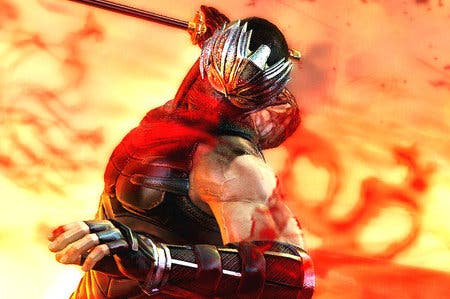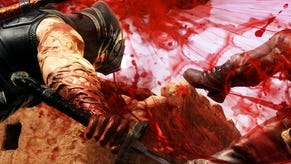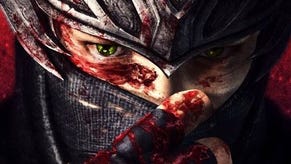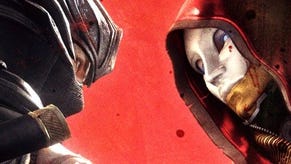Face-Off: Ninja Gaiden 3
Let the Ryu one in.
| - | Xbox 360 | PlayStation 3 |
|---|---|---|
| Disc Size | 3.8GB | 3.23GB |
| Install | 3.8GB (optional) | - |
| Surround Support | Dolby Digital | Dolby Digital |
The Ninja Gaiden series is not immune to change. Originally designed as Xbox-exclusive releases, Team Ninja built its games around the raw hardware capabilities of the hardware - something that presented a real problem when it came to porting Ninja Gaiden 2 across to the PlayStation 3.
In its original form, the game took advantage of the colossal amount of memory bandwidth available on the Xbox 360 in order to allow for a huge quantity of alpha-based effects and dozens of enemies on screen at once, upping the level of violence on offer to new extremes. For the title's PlayStation 3 release, the new "Sigma" version was radically transformed into a different beast, with copious amounts of blood splatter and the ability to dismember various characters' body parts removed, and the engine repurposed to work within the memory bandwidth and vertex shading limitations of the RSX graphics core. It also presented some pleasing enhancements that played to the PS3's technological strengths.
With Ninja Gaiden 3, Team Ninja has taken the series in yet another direction, but this time the biggest changes are skewed towards the gameplay rather than the technology. The action has been simplified, allowing the experience to be more accessible to a wider audience, with the focus now on fast unrelenting combat instead of the more tactical confrontations favoured by past titles. From a technical perspective, Team Ninja's latest also adopts a mixture of rendering techniques from the last two games, in addition to implementing new lighting effects and post-process anti-aliasing.
Let's commence with the usual head-to-head video, backed as ever with a meaty 720p comparison gallery.
Ninja Gaiden 3 operates with a dynamic framebuffer set-up on both platforms, where the rendering resolution is lowered on the fly for performance reasons, and utilises a post-process form of anti-aliasing - in this case it's likely to be NVIDIA's FXAA. We find that the resolution fluctuates anywhere between native 720p and 1024x576 at any given time depending on the rendering load present, with intermittent resolutions deployed according to the amount of stress the renderer is dealing with at any given point.
"Ninja Gaiden 3 uses dynamic resolution switching and post-process AA to boost performance, but the end result is still an inconsistent frame-rate."
Image Quality Analysis
The PlayStation 3 version tends to stick closer to 720p more often than the 360, resulting in fewer jaggies and upscaling artefacts, and when sub-HD resolutions aren't being employed the two can actually look pretty good. Unfortunately, the sad reality is that outside of the few enhanced in-engine cut-scenes, neither version stays at 720p for long. The real problem here is consistency: some scenes look noticeably better than others and rather bizarrely we find that drops in resolution occur when there is seemingly nothing happening on screen to tax the engine, leaving us with a blurry upscaled image for much longer than we'd like.
The use of post-process AA also appears to be better implemented on the PS3: edge-detection is less aggressive and texture detail is left unharmed. On the other hand, the anti-aliasing is visibly stronger on the 360, and as a consequence the artwork gets subtly blurred over and the specular highlights found on the characters and environments become subdued - shiny surfaces lose much of their sheen, for example. While this isn't an issue when the game is rendering in 720p, when sub-HD resolutions are in play the additional image blur on the 360 is certainly more noticeable.

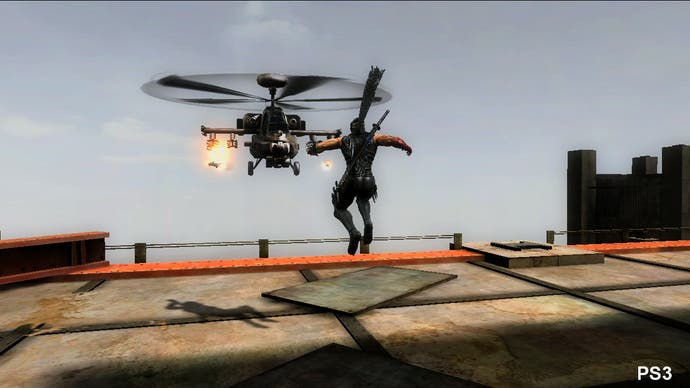
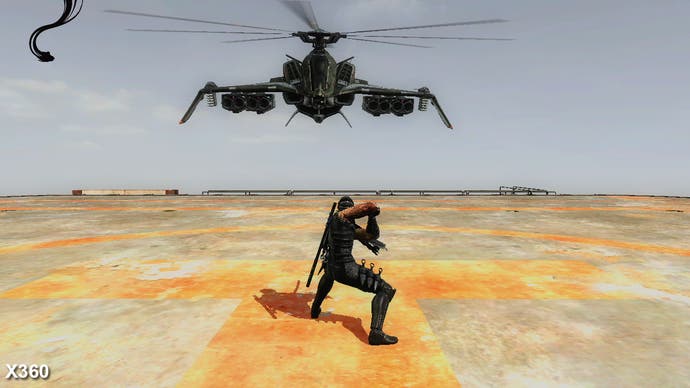
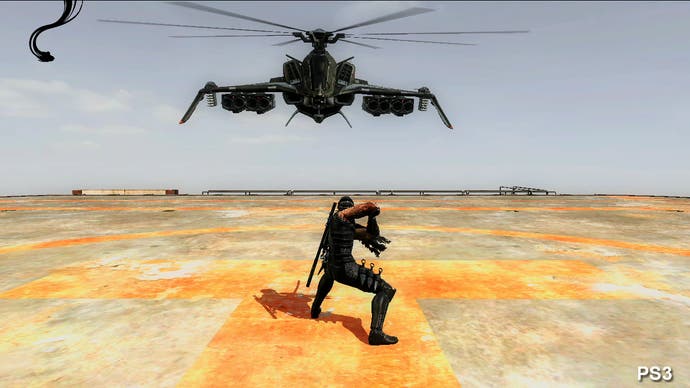
In terms of the general graphical make-up of the game, Team Ninja has worked to ensure that the bulk of the artwork is identical across both platforms, although we do see a few concessions being made in order to work around the much tighter bandwidth constraints of the PS3. In areas where there are lots of alpha-based effects in play, we find that lower-resolution textures are used and the level of anisotropic filtering is dialled back, resulting in a muddy look that can be devoid of intricate details on the affected surfaces.
Alpha buffers are rendered in full resolution on both platforms, whereas previously Team Ninja opted to render various effects in low resolution on the PS3, possibly due to the lack of available bandwidth. In other areas the PS3 displays a shadow filtering advantage: despite shadows being rendered in a very low resolution on both platforms, they look much smoother on Sony's console, with less break-up when being viewed from extreme angles. The reason for this is simple: PCF (percentage closer filtering) is supported in hardware on the PS3 and the samples used to filter shadow edges can be fetched in one pass, so the effect is less costly to render. In comparison, the effect has to be done in software on the 360, with the samples used to filter shadow edges fetched manually over multiple passes, thus incurring a performance hit.
"There's a handful of visual differences between the 360 and PS3 versions of Ninja Gaiden 3, but the most noticeable element is that screen-tear is much more pronounced on the Microsoft platform."

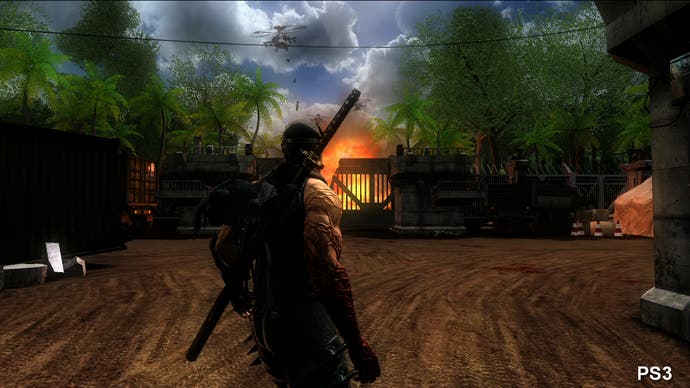
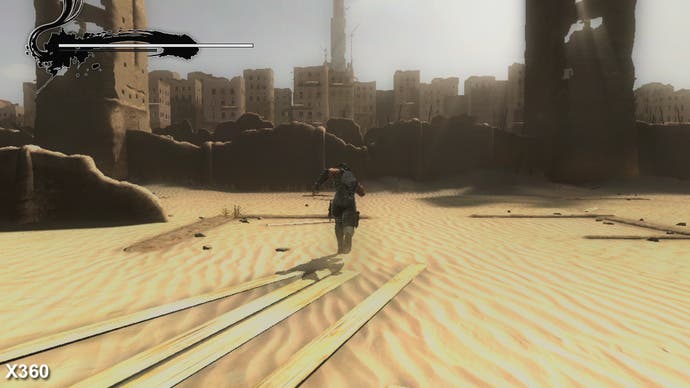
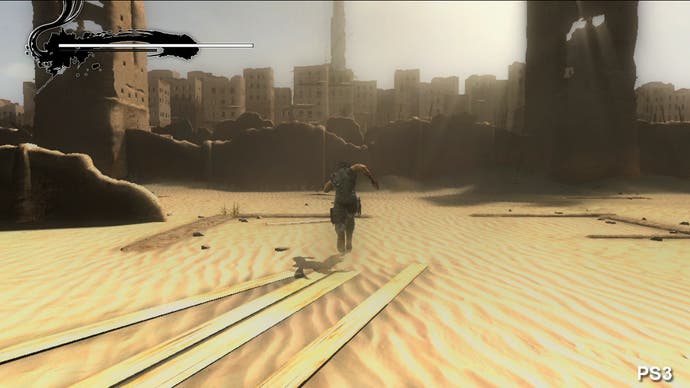
In common with past Ninja Gaiden titles, the bulk of the lighting in Ninja Gaiden 3 is pre-baked onto the environments, and as such we find the lack of dynamic light sources gives parts of the game a somewhat flat look, especially in areas where the characters don't react to all the shadows cast by their surroundings. On the flipside, the inclusion of light shafts is a great addition to the series, helping to enhance the dated lighting model, and the effect works very well in combination with the game's use of bloom. This aspect of the game is largely identical on both consoles, although in the odd scene we do see the occasional extra light source on the PS3.
With regards to the cut-scenes, the same basic rendering set-up is in place but with one big difference: Team Ninja has decided to implement two types of in-engine cinematics throughout the game, some of which are running at 60FPS with others running at a more manageable 30FPS. Both are rendered in real-time, but the difference is that the sequences which run at 30FPS also render at 720p far more regularly, to the point where the use of FXAA on the 360 isn't as detrimental to overall image quality. In fact it works rather well, minus the slight texture blur of course. The PS3 version doesn't feature as much edge-smoothing, but jaggies aren't an issue during these sequences.
The 30FPS in-engine cut-scenes also feature higher-quality shadow filtering on both systems, which look identical in this regard, although the characters don't appear to feature any dramatic graphical upgrades when compared with their in-game models, and there is still some visibly low resolution art in play. On the other hand, the 60FPS cinematics feature the same graphical set-up that is deployed during gameplay, which means more liberal use of dynamic framebuffers for the engine to cope with rendering at twice the frame-rate, along with lower-quality shadows.
"Some cut-scenes drop down to 30FPS and introduce more refined elements to overall image quality, with 60FPS cinematics deployed when leading directly into gameplay."
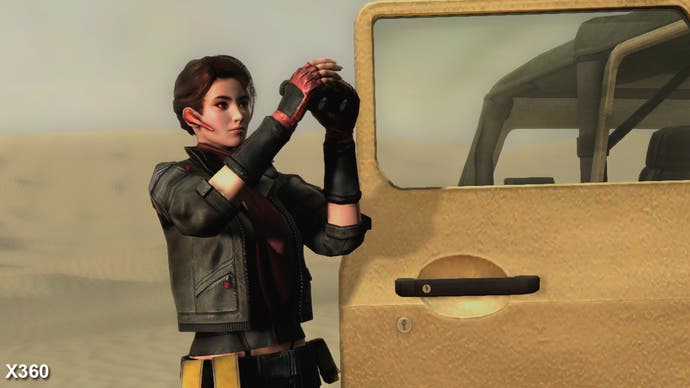


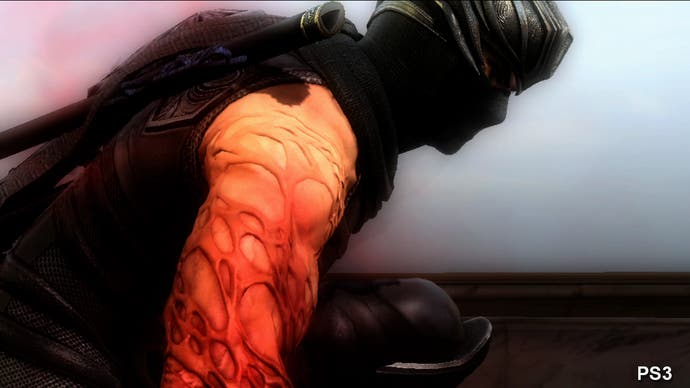
Ninja Gaiden 3: Performance Analysis
Ninja Gaiden 3 targets a 60FPS update on both formats, but unfortunately the render overshoots the rendering budget much of the time, resulting in screen-tear and torn frames. Sometimes we see frame-rate running higher on the 360 - particularly in the most intensive scenes - and sometimes on the PS3 when the load isn't quite so strong. Generally speaking, the 360 commands a small frame-rate advantage across a run of play while the PS3 maintains better image consistency and clearly exhibits fewer problems with screen-tear.
Where both versions tend to struggle though is with scenes with a lot of transparent alpha effects. In particular, the jungle stage poses something of a problem, with frames-rates taking a noticeable drop on both systems - more so on the PS3 - and with screen tearing being a real issue. The 360 manages to pull ahead slightly owing to the system's architecture being better suited to rendering scenes which use a lot of bandwidth-sapping effects, but the reality is that the experience is far from a pleasant one, with a tangible hit in smoothness on both formats.
The takeaway from the gameplay performance analysis is obvious: 360 commands a small advantage in terms of frame-rate, but it comes at the expense of some intrusive and annoying screen-tear.
"The takeaway from the gameplay performance analysis is obvious: 360 commands a small advantage in terms of frame-rate, but it comes at the expense of some intrusive and annoying screen-tear."
It seems that Team Ninja really struggled with the performance aspect of Ninja Gaiden 3, despite deploying technologies like post-process anti-aliasing and dynamic resolutions, which are both designed to ease the load on the graphics hardware. As a consequence, image quality takes a hit due to the dynamic framebuffer coming into play, and we find that the overall presentation becomes rather inconsistent.
To put things into perspective though, most of the frame-rate drops are rather subtle in nature, and we get the a real sense that gameplay isn't significantly impacted in any meaningful way. The notion of strictly adhering to 60FPS in order to maintain a consistent joypad response isn't so much of an issue when the intricate control system of previous Ninja Gaiden titles has been reduced to something more along the lines of a button-bashing frenzy. Taking that on board, the PlayStation 3 versions seems to provide the more balanced experience of the two: the frame-rate isn't massively worse, it feels just as good to play and the visibly reduced amount of tearing is obviously a big bonus.
An analysis of the game's in-engine cut-scenes allows us to see how well each version performs in a like-for-like manner, where the rendering load should be almost identical between the two SKUs. In theory we should be seeing a similar set of results as found during gameplay, where the 360 features a small lead in smoothness at the expense of a lot more screen tear. Curiously, that isn't the case at all. As our performance video shows, the PlayStation 3 features an overall advantage all round.
It's clear from the video that while both versions drop frames when the engine is presented with challenging scenes, not only is the PS3 version generally smoother, it is also almost completely devoid of any screen tearing. On the Xbox 360 tearing is evident far more often as the engine struggles to render a new frame in time for the next screen refresh, and the dips in frame-rate occur more regularly.
Ninja Gaiden 3: The Digital Foundry Verdict
"Ninja Gaiden 3 isn't particularly terrible, but it is rather bland and uninspired. Here we can't help but feel that the decision to opt for a more cinematic, action-based title hasn't really paid off."
All in all Ninja Gaiden 3 generally favours the PlayStation 3, although not without a few compromises along the way. Texture detail and filtering is pared back on a couple of occasions, while frame-rates are generally slightly lower during gameplay. On the other hand, when taking into account the significantly reduced amount of screen tear and the superior frame-rate of the cut-scenes, overall performance is slightly better on the platform. While basic smoothness is compromised for the sake of image consistency, in this case we find it to be the lesser of two evils, and the result is an experience which is a little more consistent across the board.
At the same time, the PS3 game maintains the use of higher-resolution framebuffers more often than on the 360, and the use of a less aggressive FXAA algorithm has less of an impact on overall image quality, particularly in terms of texture clarity and its impact on shiny surfaces. Shadow quality is also better, with less distortion at extreme angles, and the game's gamma set-up easier to fine tune without the final image appearing washed out - although both versions still appear too dark on a calibrated HDTV without adjusting the display's settings. That said, when both versions are running in 720p there's really not that much in it, and both can look pretty decent.
However, based on the actual quality of the game, we find it hard to make any real recommendations. Ninja Gaiden 3 isn't particularly terrible, but it is rather bland and uninspired. Here we can't help but feel that the decision to opt for a more cinematic, action-based title hasn't really paid off. The core of the gameplay has been stripped down to just a few moves and two weapons, along with Ryu's Ninpo magic, and the upgrades from past titles are nowhere to be found. Essentially, what we have here is a far more superficial affair that offers a profound disservice to die-hard fans of the series while offering little to impress newcomers.
